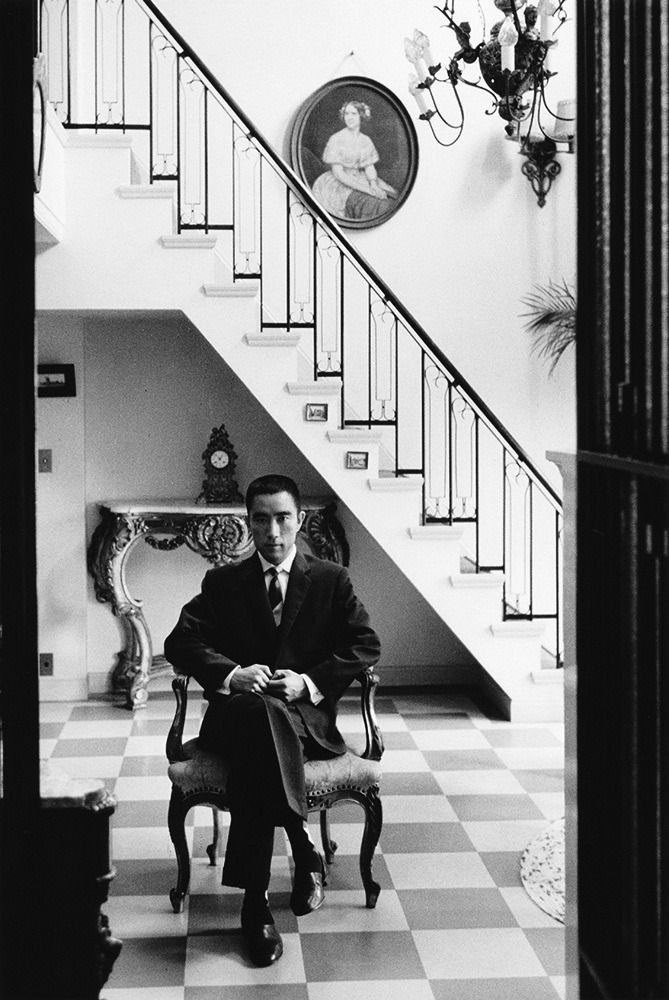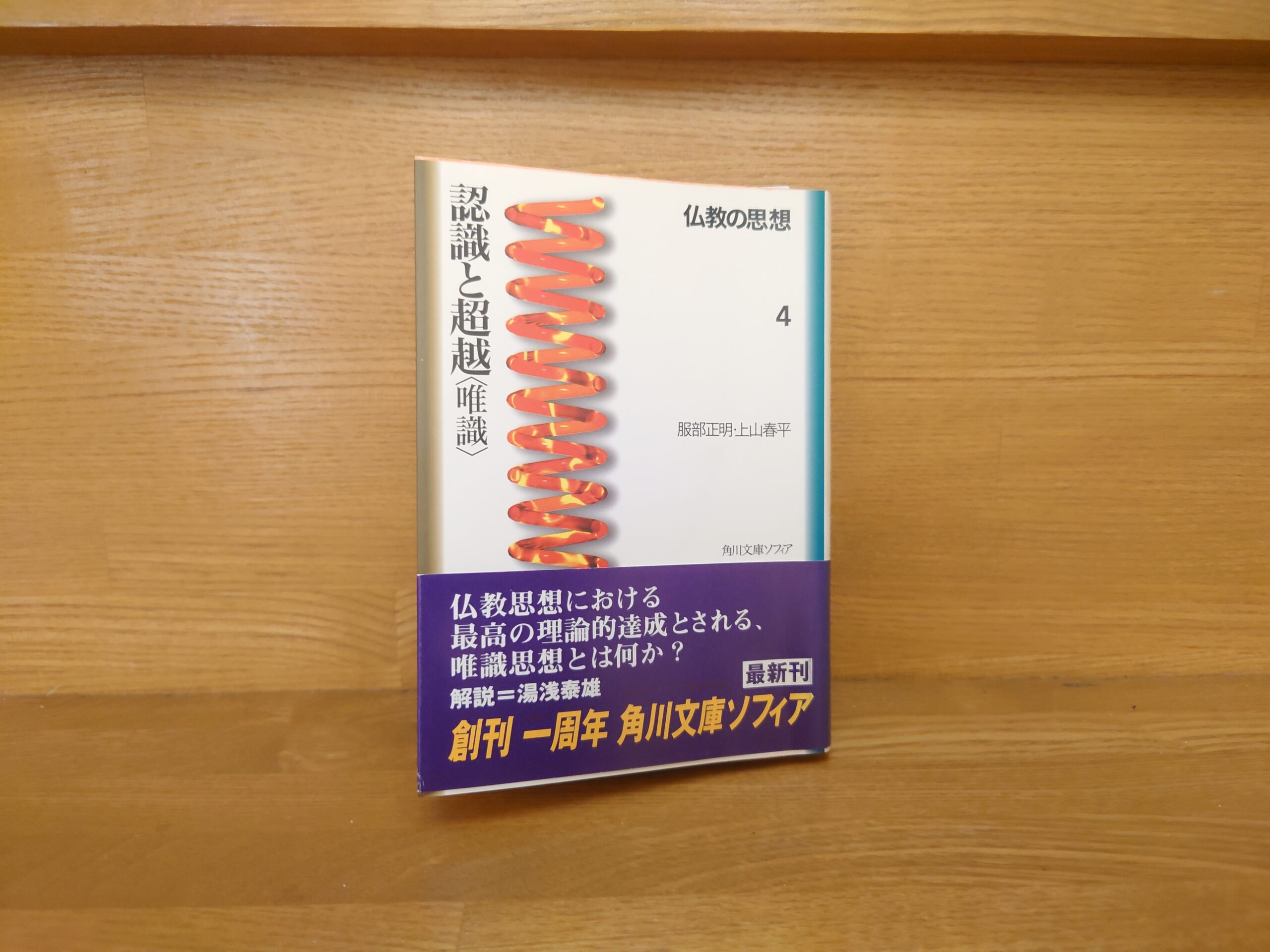Masaaki Hattori and Shumpei Ueyama, "Buddhist Thought 4: Recognition and Transcendence〈唯識〉" Summary and Comments - A recommended commentary for studying the highest level of Mahayana Buddhist thought!
The book introduced here is "Buddhist Thought 4: Recognition and Transcendence (Tadasetsu)" by Masaaki Hattori and Shumpei Ueyama, published by Kadokawa Shoten in 1997.
Let's take a quick look at the book.
As one of the two great schools of Indian Mahayana Buddhism, along with the Chugan school of thought, Yogacara is considered the highest theoretical attainment in Buddhist thought. Its ideas, constructed by Asanga (no attachment) and Vasubandhu (Sechin), were introduced to Japan in the 7th century. This book highlights the essence of Yogic thought, which is the starting point of Japanese Buddhism and is also deeply related to the practice of yoga.
AmazonProducts Page.
In my previous article.Buddhist Thought 2: An Analysis of Existence (Abhidharma).In "The Theravada Buddhist Philosophy 4: Recognition and Transcendence (Tadasana)" is a recommended reference book on Tadasana thought, which is regarded as the pinnacle of Mahayana Buddhist thought.
Co-author Shumpei Ueyama describes this Yui sense in his "Hashiki" as follows.
It is said that materialistic thought is the highest theoretical achievement in Buddhist thought. For this reason, it is a formidable opponent for someone like me, who has only a strong interest in Buddhist thought but no experience in specialized research.
Thanks to this collection, I was given the opportunity to make a pilgrimage to the famous peaks of Buddhist thought, Hua Yan, Kusha, and Chung Lun, with the guidance of outstanding experts.
There seems to be a saying among Buddhists, "Three years of Yidōsha, eight years of Yidōsha," but from my experience with both Yidōsha and Yidōsha, I would rather say, "Eight years of Yidōsha, three years of Yidōsha.
Kadokawa Shoten, Masaaki Hattori and Shumpei Kamiyama, Buddhist Thought 4: Recognition and Transcendence <唯識〉, p. 13
For those who have no experience working in research as a profession, it is a formidable opponent, almost toothless."The author states, "This is exactly the same for me, a monk. I have to admit that I know very little about Yogacara other than the basics. This is not something I can compete with unless I put a lot of effort into learning it.
Although it is such a difficult subject, this book is a highly recommended work as an introduction to it.
In this book, we will first look at what materialism is in the first place and from what historical aspect it has emerged. For us readers, it would be too strict to start with an esoteric idea. Therefore, this book is an introductory book, so we will start by looking at the process of its formation rather than the esoteric philosophy of materialism and get a rough overall picture of it. This was very helpful to read. No matter how esoteric and abstract a philosophical thought may be, it is born from the life of a living person and the flow of history. I felt that first of all, knowing such a big flow of philosophy would be just the right aid for me to plunge into materialism.
And finally, we come to the ideological aspect of what materialism is.
However, even though it is an introductory book, it does not change the fact that Yogacara itself is difficult to understand. Therefore, it cannot be said that everything is explained in a very simple and easy-to-understand manner. However, I also feel that if we try to make it even simpler, we may end up straying too far from the true nature of materialism. I honestly believe that the only way to understand this is through repeated study.
And one of the most gratifying aspects of this "Buddhist Thought Series" is that the second part of the book discusses the theme of the volume in a round-table discussion format. The dialogue in this volume also makes it easier to learn about Yogacara. It is truly groundbreaking to have such an interactive commentary in a commentary on Buddhist thought. This is one of the reasons why this series has been so well received by teachers of Buddhist studies.
Finally, there is one more point that I personally found "oops". That is the following words of Mr. Shumpei Ueyama in "Hashashiki.
In writing this collection, I have chosen one central text, such as "The Kegon Sutra" for the Kegon volume (Vol. 6), "Kusha-ron" for the Abhidharma volume (Vol. 2), or "Chung-ron" for the Chung-kwan volume (Vol. 3), and have attempted to wrestle with that text for a certain period of time and record my thoughts, issues, and awareness during this struggle. I have been trying to record my impressions, problems, and awareness of the text as if it were a kind of field notebook, but this time I could not stick to this policy. I had chosen the book "Settai Mahayana Theory," which I thought would be the best book for me to read, but I could not follow it at all.
Kadokawa Shoten, Masaaki Hattori and Shumpei Ueyama, Buddhist Thought 4: Recognition and Transcendence <唯識〉, p. 14
I chose this one book, 'Settai Mahayana Theory,' because I couldn't stand it at all."
Mr. Ueyama said this here, but surprisingly, someone once said almost exactly the same thing.
That person was Yukio Mishima.

In his essay on the writing of The Sea of Fertility, he stated.
Fortunately, I am Japanese, and fortunately the idea of reincarnation was familiar to me. However, my knowledge of reincarnation was quite immature, so I had to read and study many Buddhist texts (or rather, introductory Buddhist texts). As a result, I found what I was looking for in materialism, especiallynondelivery(at sentence-end, falling tone) indicates a confident conclusionThe Theory of the Settlement of MahavairocanaI had a rough idea that it was in the I had read the commentaries on the Settai Mahayana, but they were too difficult for me to understand.
Shinchosha, "The Complete Works of Yukio Mishima 35 (Definitive Edition)," p. 411.
That is right. When Yukio Mishima was writing his last major work, "The Sea of Fertility," he was interested in spirituality and tried to read "Settai Mahayana" as the key to his interest in spirituality, but he could not understand it at all.
I was surprised at the congruence between the words of Yukio Mishima and those of Shumpei Ueyama, and I could not help but be struck in the knee by Ueyama's later words, saying, "Hmmm.
Speaking of being toothless, neither the "Chūron" nor the "Kusha-ron" was something that I could make a dent in after spending only two or three months with them, but at any rate I seemed to have a clue to their understanding. For this purpose, the Japanese translation of the Sanskrit texts and the Japanese translation of the commentaries on the Sanskrit texts were very helpful. In this respect, "Settai Mahayana," which currently lacks the Brahma text, seems to be particularly difficult to approach for those who, like myself, are trying to approach it empty-handed.
But, of course, that is not the only reason why the Settai Mahayana Theory is so difficult. Above all, it is,yogaThe original reason for its difficulty lies in the fact that it is a treatise of the Yogacara school, which has a strong practical tendency and is also called the Yogacara school. Yogic practice is a form of yoga, a method of mental concentration common not only to Buddhism but also to all Indian religions. I realized that without a deep experience of this practice, it is impossible to understand the treatises of the materialistic school.
Of course, there must be many points in the "Kusha-ron" and "Chūron" that cannot be understood without the experience of Buddhist practice, but the "Kusha-ron" presents a fairly clear picture of the Buddhist world using common-sense thinking as a clue, while the "Chūron" presents a fundamental criticism of such a picture of the world in a way that makes sense. The "Chūron" presents a fundamental critique of this way of depicting the world in a way that makes sense to the reader.
However, when it comes to "Settai Mahayana Theory," we are talking about a world that is beyond the scope of common sense thinking or mere reasoning. The fundamental scripture of the Setsutemajnana system is the "Hosso sect of Buddhism (Japanese equivalent of the Chinese Faxiang sect)This may be the reason why it is called "the
Kadokawa Shoten, Masaaki Hattori and Shumpei Kamiyama, Buddhist Thought 4: Recognition and Transcendence (Tadasetsu), p. 14-15.
Yogic practice is a form of yoga, a method of mental concentration common not only to Buddhism but also to all Indian religions. Without a deep experience of this practice, it is impossible to understand the materialistic treatises.
I see, so this is one of the difficulties of Yogacara. Not only is intellectual philosophy itself difficult to understand, but if it cannot be understood without practical training, it is understandable that only specialists can understand it. This is where Yukio Mishima must have stumbled as expected.
Well, at any rate, this book is the first book I would recommend as an introduction to the difficult subject of materialism. It is an excellent reference book that gives you a broad overview of what Yogacara is all about. Why not pick up a copy?
This is "Buddhist Thought 4: Recognition and Transcendence " - A recommended manual for learning the best of Mahayana Buddhist thought! This is "Buddhist Thought 4: Recognition and Transcendence ".
Next Article.
Click here to read the previous article.
Related Articles





































